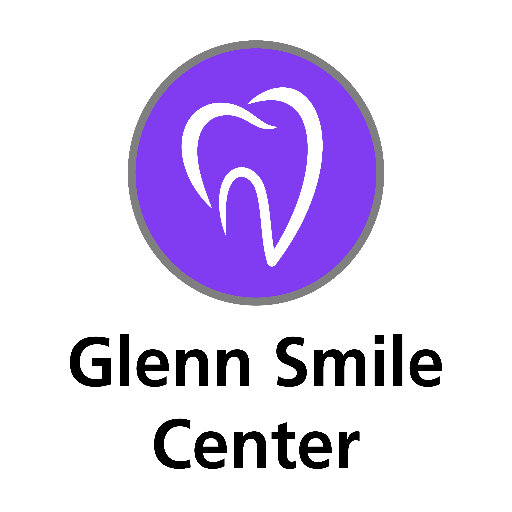Taking out wisdom teeth is a common process that usually goes smoothly. However, sometimes an infection can happen afterward. It’s very important to catch any signs of infection early to avoid bigger health problems. If you notice the area is swelling up more than before, you’re still in a lot of pain, you see some pus, or you have a fever, these could be warning signs of an infection. Such situations need quick action to stop things from getting worse. Osteomyelitis (a fancy word for bone infection) or sepsis (a dangerous reaction to infection) can happen if these signs are ignored. Knowing the difference between normal healing and when there’s a problem. What should you do next if you see any of these warning signs?
Understanding Infection Urgency
It’s important to watch for signs of infection after removing a tooth because if it’s not caught and treated early, it can lead to big problems like sepsis. This is when the infection gets so bad that it can spread throughout the body and quickly make you very sick.
If you’ve just had a tooth removed, knowing what to look out for and getting help immediately if you think there’s an infection is key. You shouldn’t wait to seek help because the longer you wait, the worse it can get, and you might need emergency care.
The folks who look after your teeth, like dentists, are focused on ensuring any signs of infection are dealt with quickly. They want to stop it from getting worse and causing bigger health problems. They also teach patients how to avoid infections in the first place and what to do if one happens. This way, everyone can help keep small problems from becoming big ones.
Dry Socket Versus Infection
Differentiating between dry socket and infection is crucial following a tooth extraction, as both conditions require distinct treatments and have different symptoms. Here are some key points to understand:
- Differentiating Symptoms: A dry socket typically presents with intense pain in the extraction site and visible bone within the socket, absent of pus. In contrast, an infection often involves swelling, redness, and might include pus or discharge from the extraction site.
- Treatment Options for Dry Socket: Treatment includes gentle cleaning of the socket, placement of a medicated dressing, and pain management.
- Treatment Options for Infection: This may involve antibiotics, drainage of the infection if necessary, and regular monitoring by a dental professional to prevent complications like sepsis.
Identifying Infection Symptoms
After you get a tooth pulled out, watching for signs that might mean something’s wrong is super important. If you notice your breath smelling bad all the time or a yucky taste in your mouth that won’t go away, even when you keep rinsing, those could be early warning signs. Other things to look out for include swelling around where the tooth was pulled, the area looking red, and feeling pain that doesn’t get better even when you take pain relief medicine. This could mean you have an infection and might need to see an emergency dentist or doctor for help, like getting medicine or a small procedure to clean it out.
To avoid problems after getting a tooth pulled, taking good care of your mouth is helpful. Make sure to clean your teeth well, follow your dentist’s instructions on taking care of the area, and try to avoid smoking. Going back to see your dentist for check-ups can also help spot any issues early on, stopping bigger problems before they start.
Signs of Severe Infections
Severe infections following a tooth extraction can manifest through alarming symptoms such as difficulty swallowing or breathing, excessive bleeding, and persistent numbness. These signs should prompt immediate consultation with a dental professional to determine the necessity of emergency procedures or surgical interventions. Here are key indicators to watch for:
- Difficulty Swallowing or Breathing: This can signal swelling or obstruction in the throat or respiratory tract, requiring urgent attention.
- Excessive Bleeding: Uncontrolled bleeding post-extraction might need professional intervention to prevent further complications.
- Persistent Numbness: Loss of sensation around the extraction site could indicate nerve damage or a spreading infection.
Recognizing these symptoms early is vital to prevent serious health outcomes.
Dental Intervention Strategies
When you have a tooth pulled, it’s really important to take care of the spot where the tooth was to prevent infection. Infections can cause big problems, but simple ways exist to avoid them. Doctors often give you a medicine called antibiotics to fight off any germs that could cause an infection. They also might tell you to rinse your mouth gently with salty water. This helps keep the area clean and can ease any soreness.
If the infection worsens, a dentist might need surgery to clean it properly. This makes sure the infection doesn’t spread and gets more serious. Returning to the dentist for a few check-ups after your tooth is pulled will help ensure everything is healing. It’s also super important to keep up with brushing and mouth care at home, following any other advice your dentist gives you. This helps your mouth heal faster and stops new infections from starting.
Frequently Asked Questions
Can Smoking After Tooth Extraction Increase Infection Risk?
Yes, smoking after tooth extraction can greatly increase the risk of infection due to nicotine effects, which impair wound healing. Smoking cessation is strongly advised to promote recovery and minimize complications.
How Long Should You Avoid Solid Foods Post-Extraction?
Post-extraction, avoiding solid foods for at least 24 to 48 hours is advisable to prevent complications such as reduced chewing efficiency and taste alteration, ensuring a smoother and safer recovery process.
Are There Herbal Remedies Effective Against Post-Extraction Infections?
Herbal remedies, including natural antiseptics like clove oil and saltwater, may offer some relief for post-extraction infections, but their efficacy varies. Always consult a dentist for appropriate treatment recommendations.
What Are the Risks of Ignoring Mild Symptoms After Extraction?
Ignoring mild symptoms after an extraction, such as slight pain or low-grade fever, risks escalating pain and significant health complications, including severe infection which could necessitate more intensive treatment or hospitalization.
How Often Should I Change Gauze Pads to Prevent Infection?
To prevent infection, change gauze pads when they become saturated. Frequent replacement minimizes bacterial growth and promotes healing. Monitor the wound and consult a dentist for unusual symptoms or excessive bleeding.
Heal Your Infected Socket Properly: Glenn Smile Center’s Expertise
It’s important to watch for signs of infection after a tooth is pulled out. You should see a dentist immediately if you’re noticing things like ongoing bad breath that won’t go away, swelling, redness, and pain where the tooth was removed.
Catching these signs early and getting help can make a big difference. Sometimes, you might need medicine like antibiotics to help clear up the infection.
So, remember, if something doesn’t feel right after getting a tooth pulled, don’t wait to get it checked out. This can help make sure you heal properly and avoid more serious problems.
Table of Contents
Toggle



